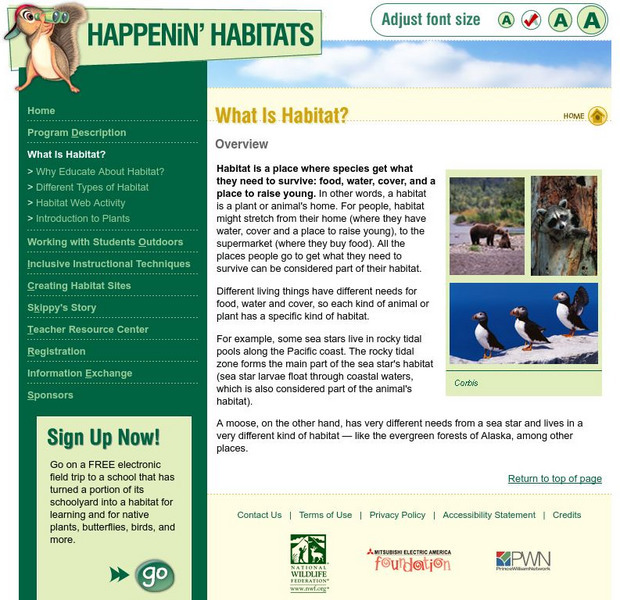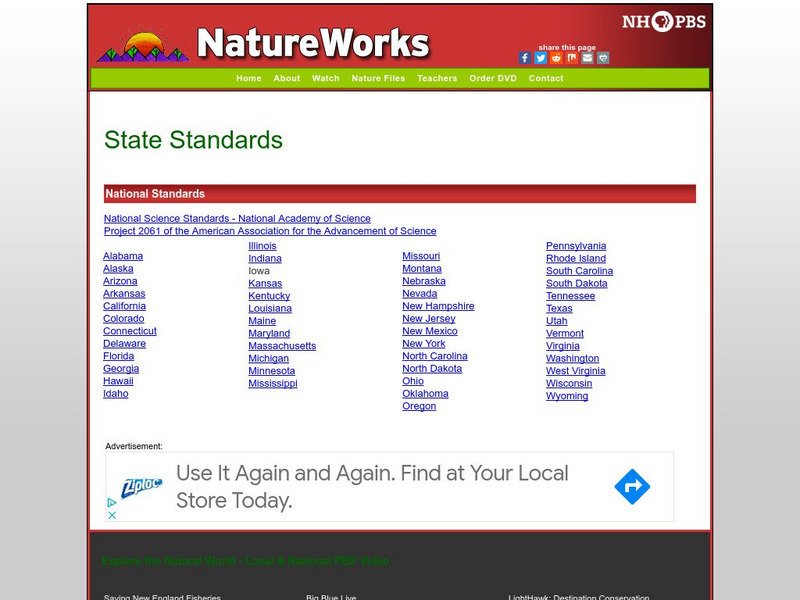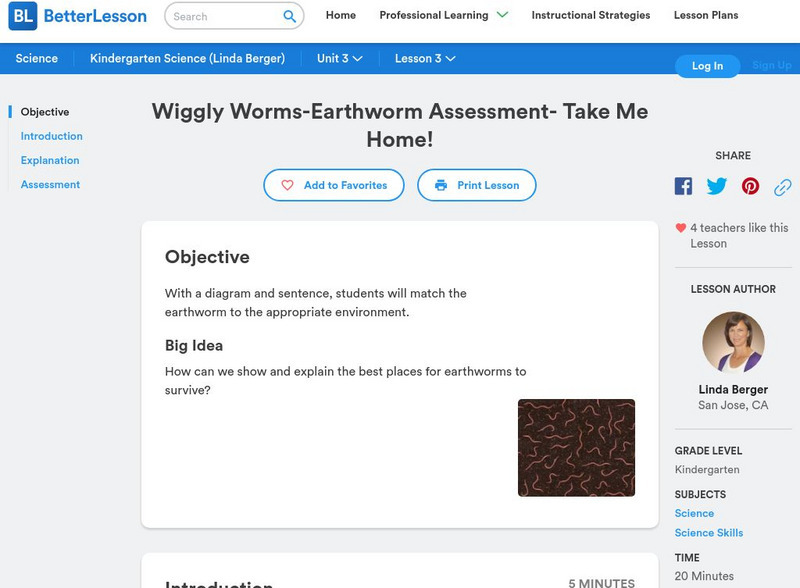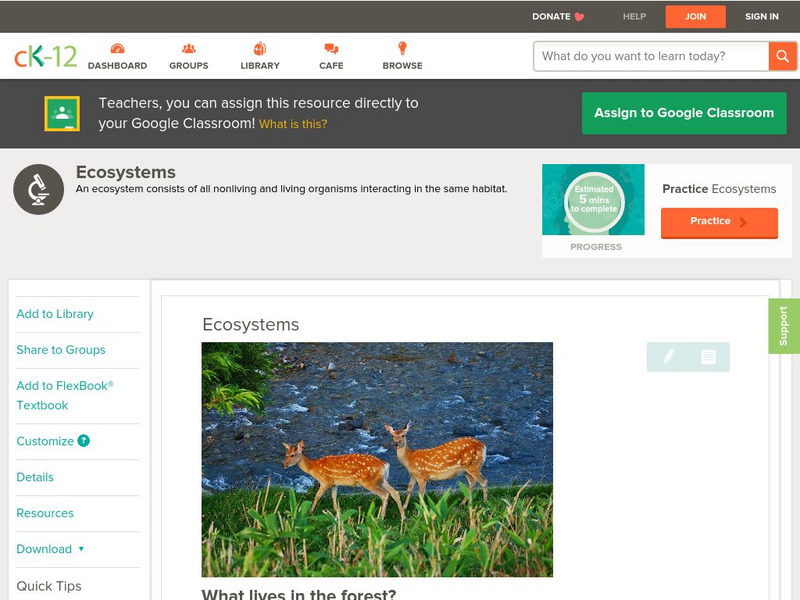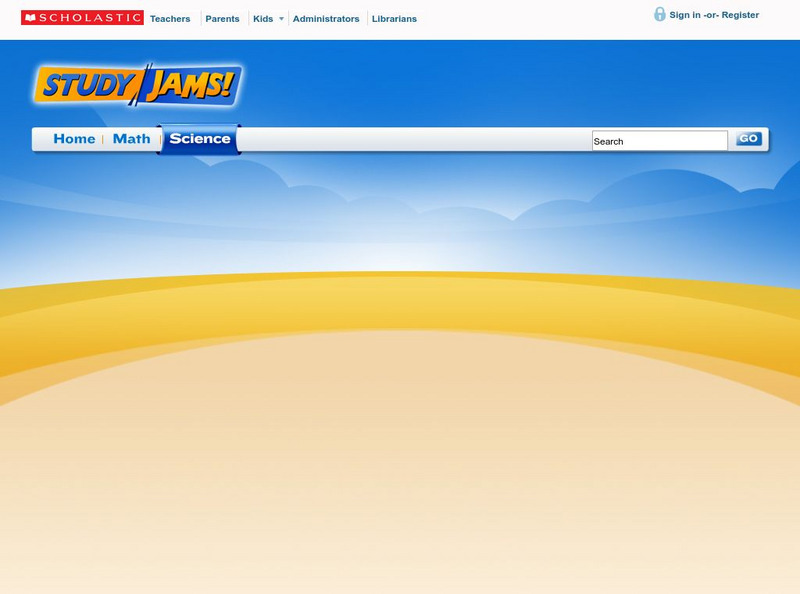Science Buddies
Science Buddies: M&m Survival Challenge
In the wild, there are two types of animals: the hunters and the hunted. A good predator is always on the prowl for fresh prey. What can an animal do to stay off of the menu? Find out how some animals use camouflage, and why sometimes it...
Lincoln Park Zoo
Lincoln Park Zoo: White Cheeked Gibbon
This resource is a great tool for research on the White-cheeked Gibbon. Information that is offered is on the Gibbon's physical description, its habitat, its niche, and its life history.
American University
Deforestation in Madagascar
Gives history of Madagascar's cultural and economic development in relation to its land clearing practices. Cites biological species indigenous to the island, and their imminent destruction. Includes links to several case studies.
Other
Project Wild: Wildlife Is Everywhere! [Pdf]
Teach students to be more aware of the wildlife in their surroundings, inside or outside. Includes lesson plan, extension activities, and evaluation ideas.
Other
Project Wild: Aquatic Times [Pdf]
Teach learners to be more aware of issues surrounding aquatic animals and their habitats. Includes lesson, extension activities, and evaluation ideas.
University of Florida
Florida Museum of Natural History: History of the Endangered Species Act
The Florida Museum of Natural History offers a review of the rationale for and basic components of the law. There are sections about how one can become involved with the protection and restoration of endangered species.
Other
National Wildlife Federation: Happenin' Habitats: What Is Habitat?
Find an overview of what a habitat is exactly. Then, for more information, click in the left hand menu for different types of habitat: forests, grasslands, deserts, wetlands, and arctic tundra. Authors also offer advice on creating a...
PBS
Nh Pbs: Nature Works: Teacher's Guides
A wealth of resources connected to individual nature-related state standards can be found here. Information in a newsletter-type format is located under particular grade levels and is accompanied by teacher guides and short quizzes to...
Better Lesson
Better Lesson: Wiggly Worms Earthworm Assessment Take Me Home!
Students will identify and describe the major element of an earthworm's habitat by drawing a diagram and writing a sentence. Included in this lesson is an earthworm habitat worksheet, video of the lesson in action, a grading rubric, and...
Scholastic
Scholastic: Learning the Causes of Extinction
There are five major causes of extinction: habitat loss, an introduced species, pollution, population growth, and overconsumption. Through this activity, students will create a list of reasons why animals can become extinct.
E-learning for Kids
E Learning for Kids: Nova Zembla: How Does Temperature Affect Plant Growth?
Viktor brought his pet plant on his trip to Nova Zembla. Help him figure out what to do to take care of the plant.
CK-12 Foundation
Ck 12: Biology: Ecosystems
[Free Registration/Login may be required to access all resource tools.] Introduction to ecosystems and other ecological concepts.
TED Talks
Ted: Ted Ed: The Earth Is Full
Have we used up all our resources? Have we filled up all the livable space on Earth? Paul Gilding suggests we have, and the possibility of devastating consequences, in a talk that's equal parts terrifying and, oddly, hopeful. [16:47]
PBS
Pbs Nature: Zebra
Learn about the natural history of the zebra in text and images, a relative of the horse that inhabits the Serengeti in East Africa and other parts of Africa.
PBS
Nh Pbs: Nature Works: Polar Bears
This site created by NatureWorks focuses on the Polar Bears. The content of this resource includes a look at this species' characteristics, range, habitat, diet, behavior and life cycle.
Other
The Butterfly Website
The Butterfly Website reveals the world of butterflies with photos, clip art, a butterfly atlas, and related resource links.
Untamed Science
Untamed Science: Biomes of the World
Investigate the climate zones and biomes of the world.
Scholastic
Scholastic: Study Jams! Science: Ecosystems: Biomes
A video and a short multiple-choice quiz on the topic of biomes, and the six different types that are found on Earth.
PBS
Nh Pbs: Nature Works: American Kestrel
Can you name the smallest North American falcon? The American Kestrel is the answer to this question. Learn more about this fascinating bird of prey through this resource. Students will find information on the diet, habitat,...
Alabama Learning Exchange
Alex: Biomes: Where Are the Wild Things?
During this lesson, students will explore biomes, ecosystems, and habitats by navigating the Internet. They will research biomes, ecosystems, and habitats in order to create a newsletter. They will have the opportunity to distribute...
Concord Consortium
Concord Consortium: Evolution: Changes in the Environment
This activity places the control of the environment under the student's control. A field starts off with a uniform light level, and thus capable of growing plants with medium-sized leaves. Students can alter the environment by growing a...
CK-12 Foundation
Ck 12: Earth Science: Biological Communities Study Guide
Review the relationship between populations and ecosystems.
ArtsNow
Arts Now Learning: Exploring Habitats Through Music Composition [Pdf]
In this lesson, students will learn about rondo form and practice a chant. After learning about the structure of the chant, they will work in small groups to create a chant about a habitat. The chants will then be combined with the model...
University of Kentucky
University of Kentucky: Bug Fun
This fun site is designed for teachers who want to have interactive fun in the classroom. "Several articles give resources and basic information about insects and their relatives while others outline activities with different insect...






